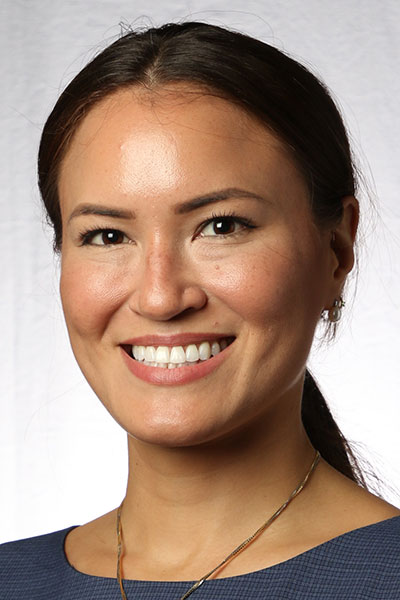Hypoglycemia and the risks it presents for people living with diabetes are underappreciated, a panel of experts reported at the 83rd Scientific Sessions. Treatment guidelines focus on A1C targets without corresponding safety targets for hypoglycemia. Clinicians routinely fail to ask about hypoglycemia during visits, and patients are reluctant to volunteer information about hypoglycemic events for fear of losing driving licenses or other adverse impacts on their day-to-day lives.
Real-World Hypoglycemia in Older Adults with Diabetes offered a detailed look at the problems hypoglycemia causes in daily life, and presenters made a clear call for change. The session can be viewed on-demand by registered meeting participants at ADA2023.org. If you haven’t registered for the 83rd Scientific Sessions, register today to access the valuable meeting content through August 28.

Ratzki-Leewing, PhD
A quarter of Americans 65 years or older have been diagnosed with diabetes, and 68% are on at least one hypoglycemia-inducing agent, typically insulin, sulfonylureas, or a combination.
“Not surprisingly, the leading causes of hypoglycemia in older individuals are insufficient nutrition and accidentally taking the wrong dose or type of insulin,” said Alexandria Ratzki-Leewing, PhD, Director of the Hypoglycemia Research Program, Schulich School of Medicine & Dentistry, Western University, London, Canada. “The direct costs of hospitalization for severe hypoglycemia in the U.S. alone is more than $1.8 billion.”
A combination of disparate data from clinical trials, health records, patient self-reporting, and continuous glucose monitoring (CGM) suggest that older people with diabetes have a mean of 1.3 hypoglycemic events every day, Dr. Ratzki-Leewing said.
Intensive glycemic control in type 1 diabetes or type 2 diabetes with insulin and/or secretagogues leads to a 150% to 300% relative increase in the risk of severe hypoglycemia versus standard control. That risk increases with advancing age. A single hypoglycemic event increases the risk of other adverse events for at least 10 years.

Both therapeutic and technological approaches offer opportunities to prevent hypoglycemia in older adults with diabetes. Knowing that treatment with sulfonylureas and insulin is common among this patient population, realigning medications based on best evidence could dramatically reduce the risk of hypoglycemia.
“We can see a pattern for overtreatment [using sulfonylureas and insulin],” said Anna Kahkoska, MD, PhD, Assistant Professor of Nutrition, University of North Carolina. “Overtreatment is more common in people who are older and more medically complex, specifically those with heart failure, chronic kidney disease, or coronary artery disease. Deintensification of sulfonylureas and insulins is not common, even in the setting of acute complications.”
There is a similar gap in the use of CGM. The technology shows promise in reducing the risk of severe hypoglycemia in older adults, but CGM adoption is lower in this population versus younger age groups.
“We need improved support for older adults, their care partner, and providers to improve CGM uptake and sustained use,” Dr. Kahkoska said. “We need to think of CGM as a safety tool for both patients and providers.”
Changes are also needed at the system level, said Kasia Lipska, MD, MHS, BS, Associate Professor of Endocrinology, Yale school of Medicine. The profit-oriented approach to health care has encouraged high patient volume and ever-shorter appointment times with inadequate diabetes support, she noted.

The growing focus on quality measures rewards providers and patients for reaching or exceeding A1C targets but lacks corresponding safety targets to limit hypoglycemia.
Cost is another barrier. Pricing for many non-insulin and non-sulfonylurea alternatives sways patient and payer decisions. Similar cost decisions inhibit adoption of CGM and other technological options to reduce the risk of hypoglycemia.
“We do not do a good job of individualizing diabetes care,” Dr. Lipska said. “Barely half of people with severe hypoglycemia discuss the event with their provider, and older adults show tighter glycemic control than younger adults, the opposite of what we want. We know that higher out-of-pocket costs decrease the likelihood of use of appropriate medications and technologies.”
However, the systems that have launched pilot programs targeting hypoglycemia are seeing improvements.
“We need more system-level interventions to reduce the risk of hypoglycemia,” Dr. Lipska said. “Few health care systems have adopted any interventions to reduce, or even track, hypoglycemia. But we are seeing that change is possible.”